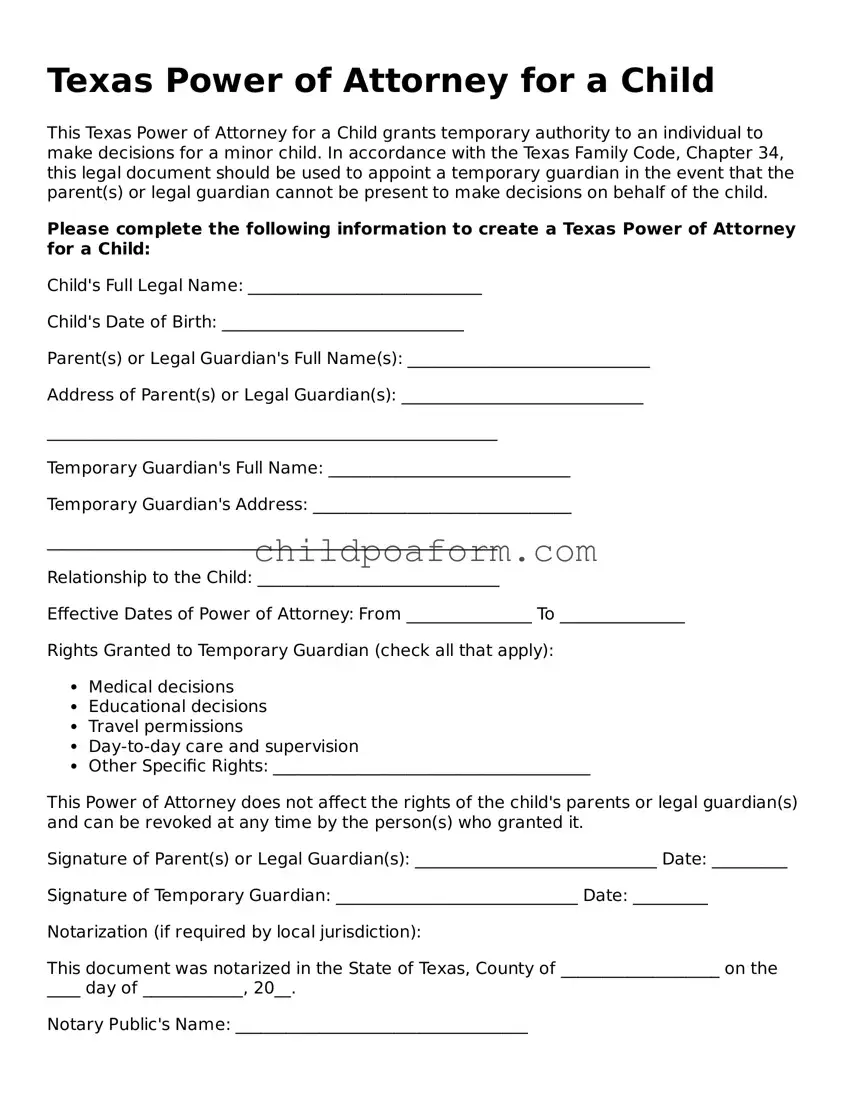Instructions on Utilizing Texas Power of Attorney for a Child
Granting someone authority to act on behalf of your child requires careful consideration and clear documentation. The Texas Power of Attorney for a Child form enables parents or guardians to formally designate another adult to make decisions and carry out actions concerning their child's welfare. It's essential to fill out this form accurately to ensure that the appointed individual has the necessary legal authority to act in the child’s best interest. Follow these step-by-step instructions to complete the process efficiently.
- Gather the necessary information: Full legal names and addresses of the parent(s) or legal guardian(s), the appointed agent, and the child.
- Read the form carefully to understand each section and the powers being granted.
- In the “Designation of Agent” section, write the full legal name and address of the person you are appointing as the attorney-in-fact for your child.
- Fill in the child’s full legal name and date of birth in the designated section.
- Specify the powers being granted to the attorney-in-fact by checking the appropriate boxes or writing specific instructions if necessary.
- Include any special conditions, limitations, or instructions regarding the granted powers in the provided space.
- Indicate the duration of the power of attorney. If it’s intended to be temporary, specify the start and end dates.
- Sign and date the form in the presence of a notary public. Ensure the appointed attorney-in-fact also signs the form, if required by the form’s instructions.
- Have the form notarized to validate its legality. This process may include the notary public recording signatures and sealing the document.
- Provide a copy of the notarized form to the attorney-in-fict and keep the original in a safe but accessible place.
- Inform relevant parties, such as schools or healthcare providers, about the power of attorney and provide them with copies if necessary.
Once the Texas Power of Attorney for a Child form is properly filled out and notarized, the designated individual will legally be able to make decisions within the scope of authority granted by the document. It’s important to review the document periodically and update it as needed to reflect any changes in circumstances or relationships. Should you need to revoke or alter the powers granted, consult with a legal professional to ensure the process is handled correctly.
